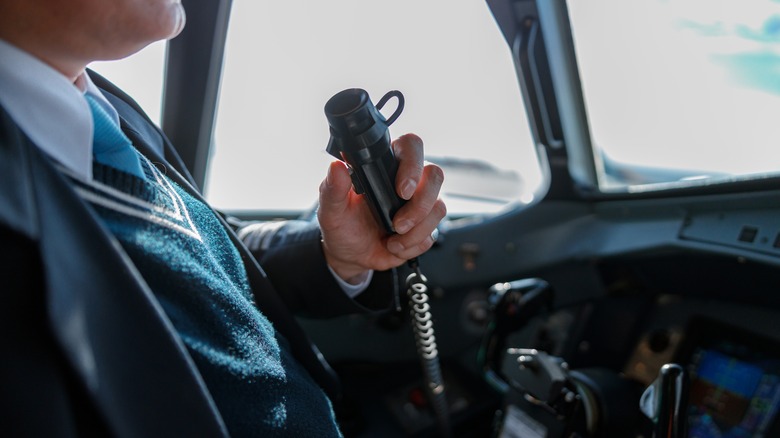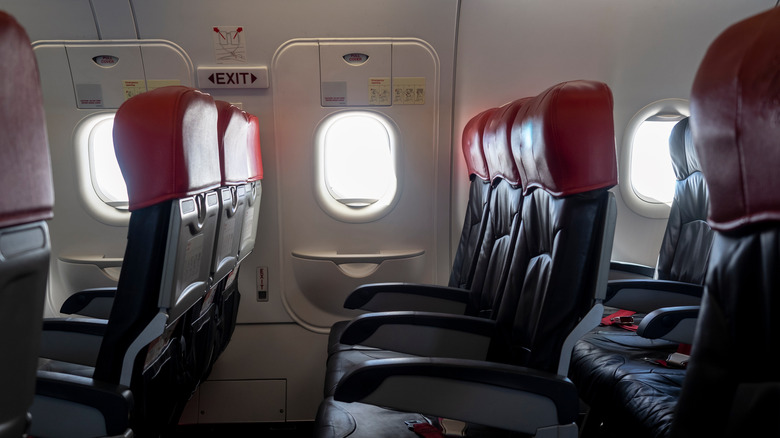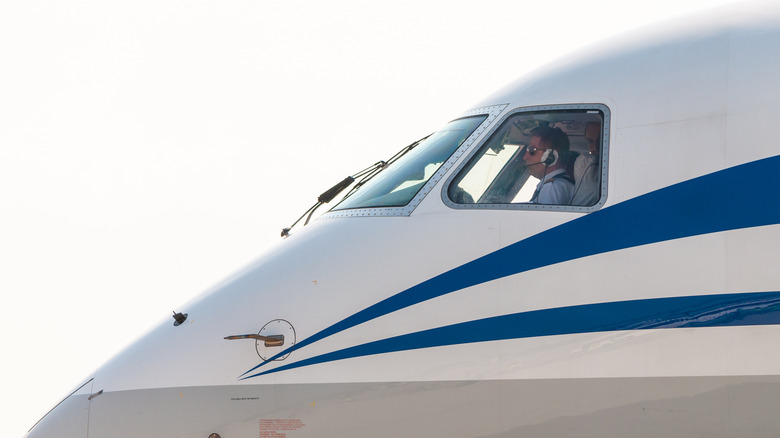Will Passengers Be Informed If Their Plane Is About To Crash? A Pilot Fills Us In
In the realm of air travel, few topics evoke as much seat-clutching anxiety and morbid curiosity as the procedures and communications that occur during the worst of all imaginable in-flight emergencies: a plane crash. To demystify some of these concerns, we spoke exclusively with Brandon Meadows, a commercial pilot known online as Captain Meadows (@captain_meadows on Instagram and TikTok), about what happens in the cockpit and cabin when a flight encounters severe trouble.
One of the most pressing questions many travelers have is whether pilots inform the passengers if their plane is about to crash. According to Captain Meadows, "The pilots are supposed to, but it is workload permitting." Air traffic control (ATC) will most certainly be informed with a loud and clear "Mayday!" but informing passengers is the last priority. The pilots are busy with something more important: flying the plane. He elaborates on the piloting maxim of "aviate, navigate, communicate," which prioritizes aviating the airplane safely above all else.
A pilot's primary focus is to control the aircraft and ensure that it is heading in the right direction before making any communication. "Safe flying is all about prioritizing your workload, and if a safe emergency landing necessitates not informing the passengers, then the passengers will not be informed," he adds. During training, pilots are taught to prioritize aircraft control — only when the situation is stable can the status be relayed to passengers. Distractions in the cockpit, like radio transmissions or troubleshooting problems, are among the leading causes of avoidable accidents.
Standards and practices during an in-flight crisis
When asked about the rules and regulations concerning the notification of passengers during an in-flight malfunction, Brandon Meadows clarifies that there is no regulatory obligation for pilots to inform passengers about every issue. In general, pilots are encouraged to communicate with their passengers. However, Captain Meadows explains that this "is not a priority." The implication here is that communication, while important, must not interfere with the safe operation of the aircraft.
Regarding what passengers should know in the event of a major in-flight emergency, Captain Meadows stresses the life-saving importance of remaining calm and following instructions. "Stay in your seat, keep your seatbelt fastened, and do what the crew says," he advises. He also points out that passengers should not attempt to assist the crew unless explicitly asked, as uncoordinated efforts can complicate the crew's response to an emergency.
The only passengers with a "special role" during an in-flight crisis are those sitting near an emergency exit. They hold a crucial responsibility: to assist in opening the exit doors during an emergency landing. Before takeoff, flight attendants will provide specific instructions and verify the passengers' readiness. They must be physically able to handle the door, committed to helping others evacuate quickly and safely, be over 15 years old, and understand and agree to the instructions. If you're looking to get more legroom, be aware that it involves a serious commitment before booking an exit row seat for your flight.
Safety in aviation
To put things in perspective, Brandon Meadows reminds us that flying remains the safest mode of transportation. "With all the regulations and training in place that surround aviation and the FAA (Federal Aviation Administration), the likelihood of you being involved in an in-flight emergency is very slim," he reassures. The odds of a plane crash happening in the first place are one in 1.2 million, while the chance of dying from that crash is one in 11 million (per The Week). Choking on food, with fatality odds of one in 2,659 (per the National Safety Council), should be more of a concern. So please, chew that airplane food slowly.
While the possibility of a plane crash is a terrifying thought, in-flight procedures are there to maximize safety and minimize risks. The pilot's job is to ensure the aircraft is flown safely — communication with passengers takes a secondary role during those critical moments in the cockpit. Understanding these priorities illuminates the challenges pilots face and the decisions they must make in high-stress situations. As air travelers, knowing that pilots like Captain Meadows are trained to handle emergencies can provide some peace of mind during our journeys in the sky. Here is the real question: When you're soaring 36,000 feet in the air at nearly 600 miles an hour, strapped with a little seatbelt in a giant husk of metal, would you really want to hear the pilot say, "Plane crash impending, brace for impact"?


